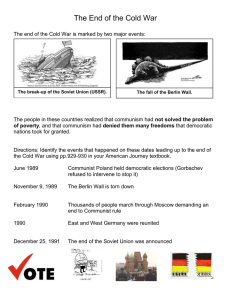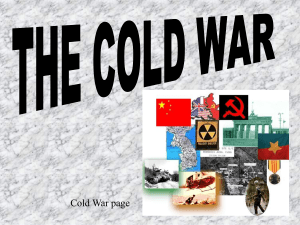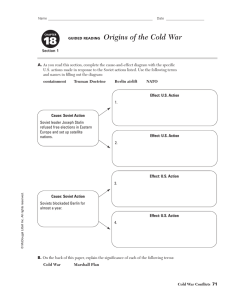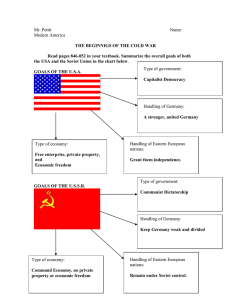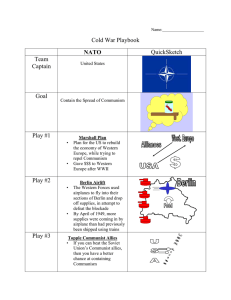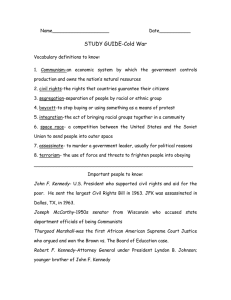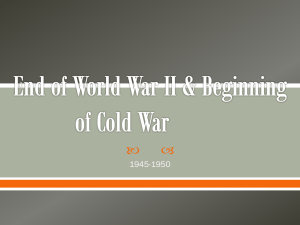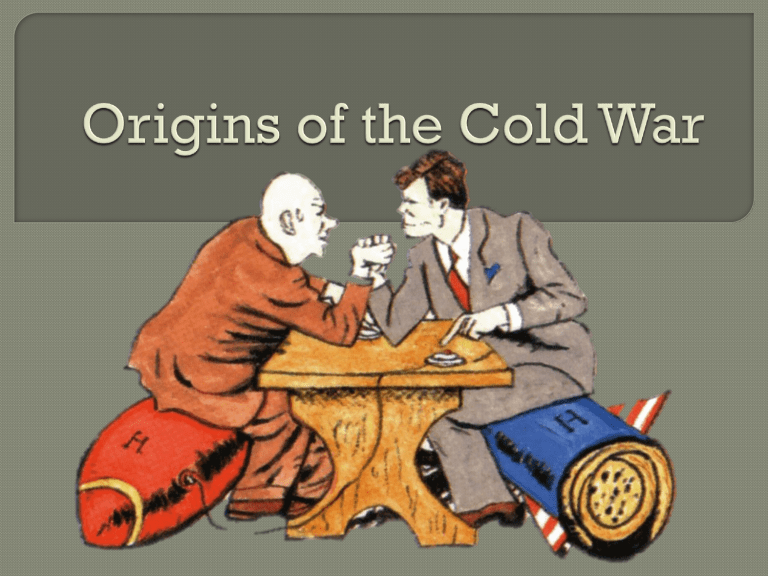
Conference discussing post-war Europe between Stalin, Churchill and FDR • Supported United Nations • Reestablished original governments • Divided Germany & Berlin Vice-President from Missouri Meeting between Stalin, Truman & Attlee Created the United Nations Germany divided between Soviets & Allied powers Polish elections (don’t take place for 2 years and Soviets eliminated all opposition) AMERICAN VISION Shaped by Great Depression Wanted to spread democracy and capitalism Believed interdependence solves war (World Bank, IMF) SOVIET VISION Shaped by invasions • Major WW2 losses • Wanted to secure their border with a buffer zone Satellite States – Countries subject to Soviet domination on their Western border Wanted to spread communism International peacekeeping organization founded in 1951 to prevent future world wars General Assembly – Every country is equal and has a single vote Security Council – 5 permanent members with 6 appointed members China, Russia, US, France and Great Britain have veto power Nations that influence or control less powerful states Soviet Union & US Iron Curtain – (1946) Term used to describe Soviet domination and oppression of satellite nations A state of tension between nations that stops short of full-scale war. Soviet & Eastern Bloc Nations [“Iron Curtain”] GOAL spread worldwide Communism METHODOLOGIES: US & the Western Democracies GOAL “Containment” of Communism & the eventual collapse of the Communist world. [George Kennan] 1. Ideological Competition for the minds and hearts of Third World peoples [Communist govt. & command economy vs. democratic govt. & capitalist economy] “proxy wars” 2. Political Competition (NATO v. Warsaw Pact) 3. Espionage [KGB vs. CIA] 4. Arms Race [nuclear escalation] Policy of keeping communism contained within its existing boarders. Containment - US policy using military, economic & diplomatic strategies to stop Soviet expansion and increase US influence. Formal US policy to aid any country threatened by Communism NATO (1949) – Alliance between Western powers to defend against Soviet aggression US, Great Britain, France, Canada Soviet military alliance opposed to NATO USSR, Romania, East Germany, Poland US Secretary of State George Marshall feared European poverty would cause Communist revolts US policy of rebuilding Europe and creating strong democracies Over 1952 $12 billion given between 1947 & Berlin & Germany were divided into 4 zones of control Soviet refuses to end their occupation British, French & US zones combined into West Germany (1948) USSR cuts West Berlin off from the rest of the world East Berlin West Germany East Germany West Berlin Truman orders supplies flown into blockaded Berlin Soviet economic plan to aid Eastern Europe Site of nuclear testing by the US Used to intimidate Soviets
